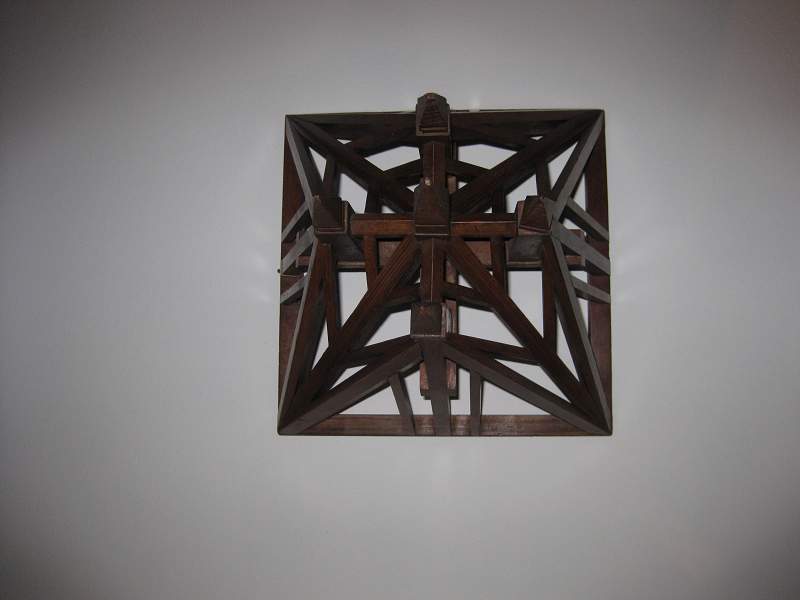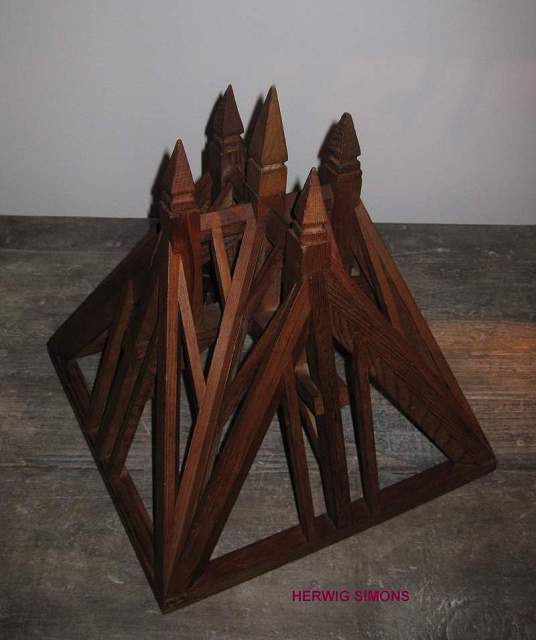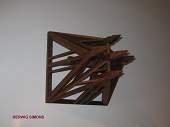
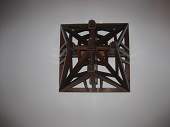
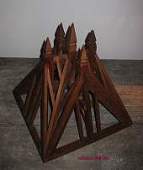
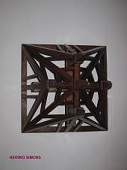
A late 19th. century French wooden Architectural model of a roof construction " Charpente"
Size: 32 x 32 x 34 cm.
These models were made by pupils of the Compagnonnage.
Societies of journeyman in certain craft trades in France. The compagnonnages traced their origin to fraternities of workers on medieval cathedrals or even the Temple of Solomon, but they assumed a stable institutional form in France by the 1600s. Outlawed by the Le Chapelier law of 1791, they survived clandestinely during the Revolutionary and Napoleonic periods to flourish under the Restoration and July Monarchy, when 100,000 workers passed through the compagnonnages every three years. In 1848, a compagnonnage spokes person and writer, Agricol Perdiguier, a joiner by profession, won election to the Constituent Assembly. He hai led the brotherhoods as progressive workers associations; Louis Blanc, Lamartine and George Sand (who wrote a novel about the compagnonnage) shared his enthusiasm. Factionalism, challenges from new forms of worker organizations, economic changes, and opposition to the confraternities' exclusiveness, however, led to the decay of the compagnonnage system in the late 1800s.Particularly strong in the building trades, compagnonnages also existed for among thirty ty pes of tradesmen represented in the movement, such as carpenters, printers, blacksmiths and farriers. Compagnonnages were associations of journeymen, typically eighteen to twenty-five years old, travelling and gaining training on a three- to seven-year tour de France. Apprentices (aspirants) could join, but full members (the compagnons reçus and compagnons finis) possessed a certain level of skill. Because of the lack of opportunities to achieve master status, many artisans remained compagnons for extended periods.



